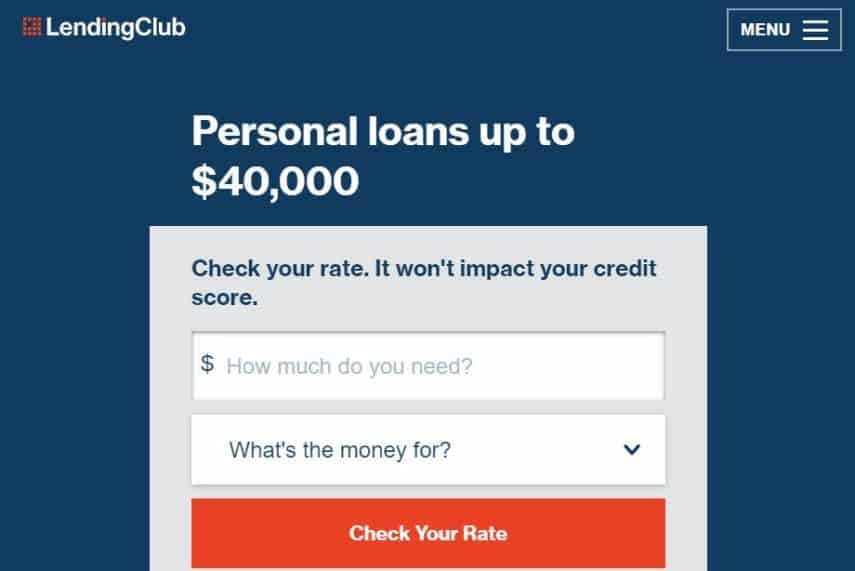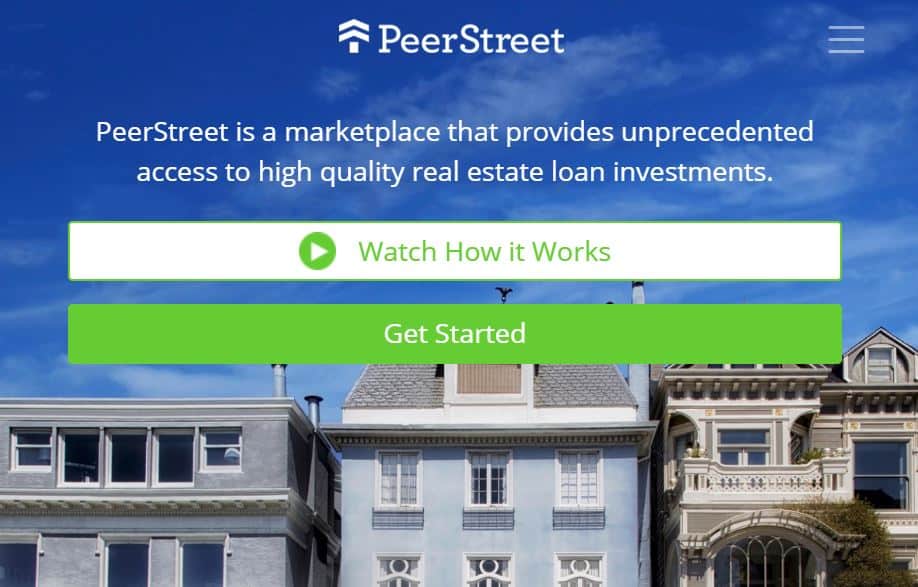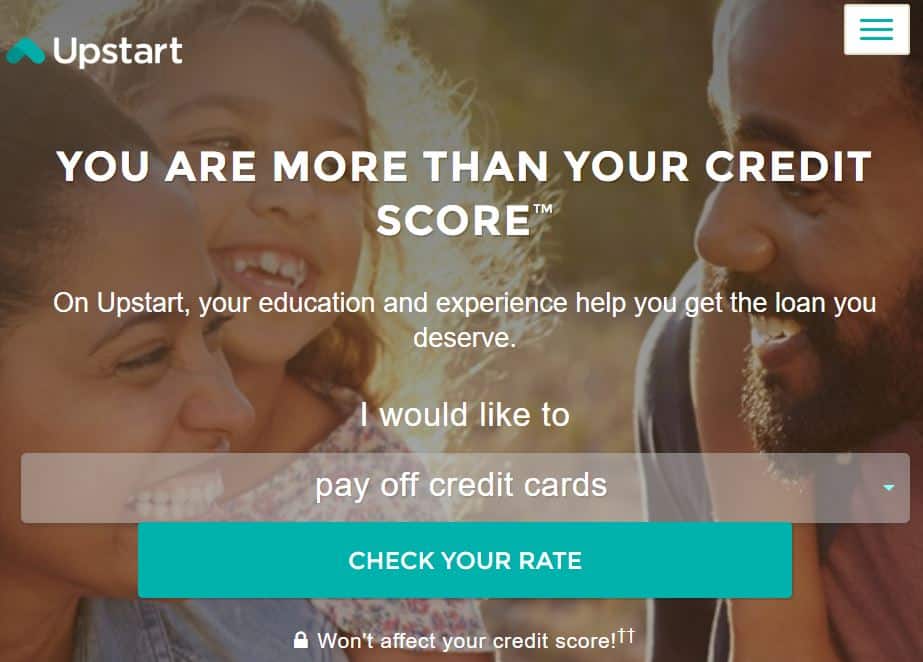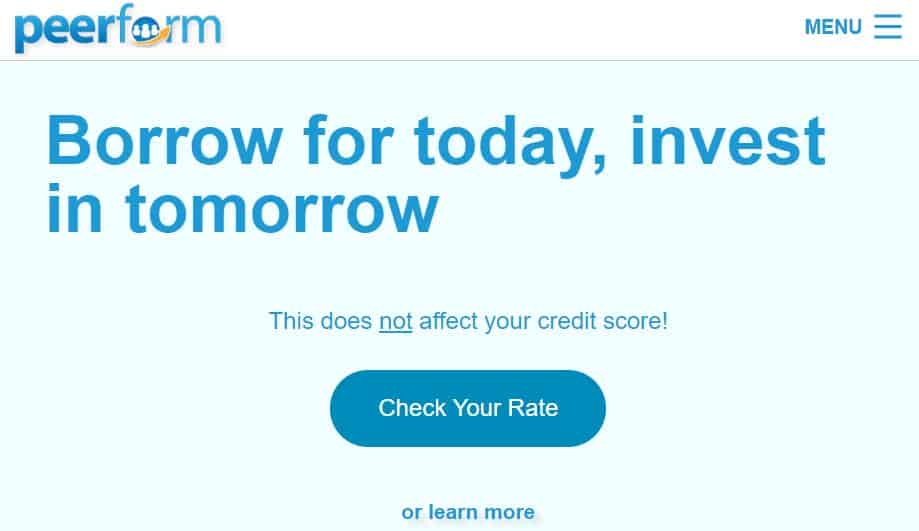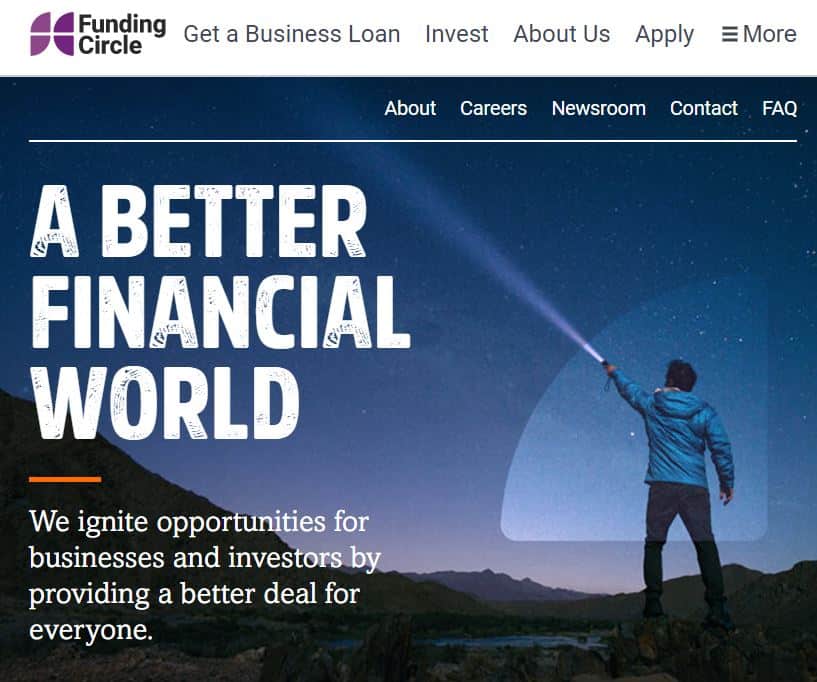Peer-to-Peer Lending: How-to Guide for Borrowers & Investors
Our readers always come first
The content on DollarSprout includes links to our advertising partners. When you read our content and click on one of our partners’ links, and then decide to complete an offer — whether it’s downloading an app, opening an account, or some other action — we may earn a commission from that advertiser, at no extra cost to you.
Our ultimate goal is to educate and inform, not lure you into signing up for certain offers. Compensation from our partners may impact what products we cover and where they appear on the site, but does not have any impact on the objectivity of our reviews or advice.
Peer-to-peer lending relies on a crowdsourcing model where other people can fund your loan. Peer-to-peer funding attracts two different types of people: borrowers who need money, and investors who want to make money funding other people’s loans.

Some of the links on DollarSprout point to products or services from partners we trust. If you choose to make a purchase through one, we may earn a commission, which supports the ongoing maintenance and improvement of our site at no additional cost to you. Learn more.
If you’re in the market for a loan, there’s a good chance you’ve come across “peer-to-peer” or “P2P” lenders.
Peer-to-peer lending relies on a crowdsourcing model where other people can fund your loan. Unlike GoFundMe, these aren’t people you know. These are third-party investors.
Peer-to-peer funding attracts two different types of people: borrowers who need money and investors who want to make money funding other people’s loans.
It’s a fast-growing model. In 2014, peer-to-peer lending platforms issued $5.5 billion in loans, and PricewaterhouseCoopers predicts that peer-to-peer lending will grow to a $150 billion industry by 2025.[1]
Peer-to-peer lending offers a lot of benefits whether you’re looking to borrow or make money by investing in p2p loans.
What Is Peer-to-Peer Lending?
Peer-to-peer lending relies on websites that serve as a marketplace to connect individual borrowers with lenders. The most popular ones are LendingClub, Prosper, and Upstart.
Some people think that peer-to-peer loans remove the middleman, i.e. the bank, from the equation. That’s not entirely true, however. A bank still funds and issues the loan. For example, WebBank, a Salt Lake City-based online bank, often funds loans from peer-to-peer lenders.
The difference with peer-to-peer lending is that individual investors buy a portion of that debt in the form of a note. Investors assume all the risk if a borrower defaults on the loan, but they get rewarded with interest if a loan is paid off. It’s a roundabout way of funding a loan.
For borrowers, using peer-to-peer lending may be cheaper than working with a bank or other lender. If you have a poor credit score, you may even be approved for a loan when other lenders won’t give you money, although you could end up paying high interest rates.
How Does Peer-to-Peer Lending Work?
A borrower first applies for a loan through a peer-to-peer lending site. If they’re approved, the website will then create a listing that individual investors can see, including the following details:
- The loan amount
- The loan’s purpose
- The borrower’s financial details, such as credit score and income
All identifying information is kept confidential. Investors can’t see your name, Social Security Number, address, race, or any other personal information.
They see what they need to make a decision on whether to back your loan or not. In some cases, investors may be able to sort loans by location, but that’s about as specific as it gets.
Your best friend could log in and fund your loan and they’d never know unless you told them you were applying for a loan. If you’re a borrower, you’ll never see any details about who’s funding your loan.
Websites usually allow listings to stay posted for a few weeks. During this time, investors can choose to fund your loan in increments as small as $25 on some platforms. They can also choose to fund the whole amount.
This is an attractive proposition for investors because this spreads their risk out so they’re not putting all their money into one loan.
Once a loan is fully funded, it will be dispersed to the borrower and paid back just like any other loan.
One of the downsides of peer-to-peer lending is that it’s possible your loan doesn’t get funded. If that’s the case, the website will usually offer you a smaller loan than you’ve requested, but you may reject that offer. This is a rare possibility, but it does happen.
Types of Peer-to-Peer Loans
Most peer-to-peer loans are issued as unsecured personal loans. You can generally use these for a wide range of purposes including:
- Vacations
- Weddings
- Debt consolidation
- Medical or veterinary care
- Home renovations and repairs
- Informal education, such as coding boot camps
Most personal loans don’t allow you to use the funds to pay for college costs, investments, or illegal activities.
Depending on the platform, you may also be able to get other types of loans, including:
- Auto loans
- Business loans
- Real estate loans for specific purposes, such as landlord renovations or bridge loans
6 Peer-to-Peer Lending Platforms to Look Into
There are many popular platforms where you can find P2P loans, but each has its own rates and rules.
1. Prosper
Prosper is the first peer-to-peer lender and began in 2005. Since then, it’s issued $15 billion in loans.
Prosper borrowers
Prosper offers personal loans for many purposes such as debt consolidation, engagement rings, and adoption. It also offers short-term real estate, auto, and small business loans. It will even be offering HELOCs soon.
- Amounts: $2,000-$40,000
- Term length: 3 or 5 years
- APRs: 7.95-35.99%
- Origination fee: 2.41-5%
Disclosure: For example, a three-year $10,000 personal loan would have an interest rate of 11.74% and a 5.00% origination fee for an annual percentage rate (APR) of 15.34% APR. You would receive $9,500 and make 36 scheduled monthly payments of $330.9. A five-year $10,000 personal loan would have an interest rate of 11.99% and a 5.00% origination fee with a 14.27% APR. You would receive $9,500 and make 60 scheduled monthly payments of $222.39. Origination fees vary between 2.41%-5%. Personal loan APRs through Prosper range from 7.95% to 35.99%, with the lowest rates for the most creditworthy borrowers.
Eligibility for personal loans up to $40,000 depends on the information provided by the applicant in the application form. Eligibility for personal loans is not guaranteed and requires that a sufficient number of investors commit funds to your account and that you meet credit and other conditions. Refer to Borrower Registration Agreement and all terms and conditions for details. All personal loans made by WebBank, Member FDIC.
Prosper investors
It’s easy to start investing in notes with Prosper because you only need $25 to buy a note.
You can choose each note yourself with filters or use an auto-investing feature with set parameters. Prosper charges a fee of 1% of the outstanding principal balance.
2. LendingClub
LendingClub is one of the largest and most well-known peer-to-peer lending platforms. It’s been around since 2007 and has issued over $47 billion in loans since then.
LendingClub borrowers
LendingClub’s biggest business is its personal loans, but it also offers auto refinancing, business loans, and medical and dental loans.
- Amounts: $1,000-$4,000
- Term lengths: 3 or 5 years
- APRs: 6.95-35.89%
- Origination fee: 1.00-6.00%
LendingClub investors
To invest in notes with LendingClub, you’ll need to deposit at least $1,000 into your investing account. You can select individual notes by filtering for credit risk, location, term length, loan purpose, or other features.
Each note is for $25, and you can choose each individual note yourself or use an automated investing tool to fund notes according to preset directives, such as risk level or term length.
Payments from your notes will be deposited back into your investing account. From there, you can choose to fund more notes or withdraw the money back into your bank account. LendingClub charges a fee of 1% of each payment received.
3. PeerStreet
PeerStreet is a new kind of peer-to-peer lending platform. It works with other lenders to let consumers invest in short-term real estate loans, like the kind that real estate developers and landlords use.
It’s not as much a platform for borrowers, so you can’t go here if you need your own personal loan.
PeerStreet investors
The advantage of investing in real estate loans through PeerStreet is that you may earn higher returns. PeerStreet advertises average returns of 6-9%, whereas personal loan lenders like LendingClub report returns around 4-7%.
PeerStreet only allows accredited investors on the platform, and the minimum investment amount is $1,000. The company charges fees of 0.25-1%.
4. Upstart
Upstart is a peer-to-peer lender founded by ex-Google employees. Its features offer a unique selling point. The platform uses artificial intelligence and machine learning algorithms to automatically make a lending decision for most people.
This unique approval process uses a wider range of factors and results in lower default rates than most other lenders.
So far the platform has issued over $3.8 billion in loans, and it has plans for aggressive growth.
Upstart borrowers
Upstart offers personal loans, business loans, student loans, and student loan refinancing. It may be a good platform to choose if your credit score isn’t the greatest, but you have other redeeming qualities such as your education and job experience.
You’ll still need a credit score of at least 620 or 580 if you live in California. If you don’t have a credit score, Upstart may still be willing to work with you.
- Amounts: $1,000-$50,000
- Term lengths: 3 or 5 years
- APRs: 4.68-35.99%
- Origination fee: Not disclosed
Upstart investors
You’ll need to be an accredited investor to use Upstart’s platform. If you’re eligible, Upstart has much lower minimums than other peer-to-peer lending platforms. You can get started with as little as $100.
Once your account is funded, you’ll set up rules for automated investing in notes. This means you won’t be able to individually pick which loans to fund like you can with other platforms. Upstart also charges slightly lower fees, just 0.5% of the outstanding loan balance.
5. Peerform
Peerform’s website seems a bit dated compared to its flashier competitors, but it’s still a decent option for borrowers and investors. This company offers personal, auto, business, and medical loans. Peerform has been around since 2010.
Peerform borrowers
You’ll need a credit score of at least 600 to be approved for a loan. There’s not much that differentiates Peerform from other lending platforms.
However, its maximum APR is slightly lower than the other lenders. If you think you won’t qualify for a low rate, it could be worthwhile to apply with Peerform first. It’s still worth shopping around and checking your rate with multiple lenders.
- Amounts: $4,000-$25,000
- Term lengths: 3 or 5 years
- APRs: 5.99-29.99%
- Origination fee: 1.00-5.00%
Peerform investors
Peerform isn’t as forthcoming with details about how investing works on its platform compared to other peer-to-peer lenders. It doesn’t disclose what fees are involved or what the minimum investment is.
You need to be an accredited investor to invest through Peerform.
6. Funding Circle
Funding Circle only offers business loans. There’s a huge market for business loans since business owners applying for a traditional bank loan face tedious application requirements and high rejection rates.
This platform offers business loans in several countries and has been around since 2010. It’s issued $10.2 billion to 72,000 small businesses.
Funding Circle borrowers
Funding Circle offers business loans to different types of businesses with just a few exceptions like weapons manufacturers and marijuana dispensaries.
You can use the funds for almost anything as long as it’s business-related, such as buying inventory or expanding to a new location. These loans are secured with your business’s assets and a personal guarantee.
- Amounts: $25,000-$500,000
- Term length: 6 months-5 years
- APRs: 4.99-22.99%
- Origination fee: 3.49-6.99%
Funding Circle investors
Funding Circle requires a much larger investment than other peer-to-peer lenders. You’ll need to be an accredited investor, and have committed at least $25,000 to Funding Circle to open your account.
The minimum investment is $500 per note in loans that you choose or you can select notes through an automated investing tool. Funding Circle charges a fee of 1% of the outstanding loan balance.
P2P Lending from an Investor’s Perspective
Anyone can become an investor on a peer-to-peer lending platform as long as you pass certain criteria, such as having a certain annual income or net worth. These requirements are determined on a state-by-state basis.
In most states, you’ll need to have both a net worth and an annual income of at least $80,000, or $85,000 in California. If you don’t have that kind of income, you may also qualify if you have a net worth of at least $280,000.
Some peer-to-peer lending platforms also require you to be an accredited investor. This is an SEC-defined status, and to get it you’ll need to have an annual income of at least $200,000 for the past two years, need to have that income or more for this year, or a net worth of at least $1 million.
Peer-to-peer lending offers an attractive way to diversify your portfolio. You can invest in individual notes with as little as $25 in most cases.
Peer-to-peer lending platforms aren’t meant to be your sole investment vehicle, but they can offer you a way to potentially earn big rewards outside of investing in the stock market.
Those rewards vary with the types and number of loans you fund. The riskier the loan, the higher the returns you’ll get because that borrower will, in turn, be charged higher rates. However, the riskier a borrower is, the greater the chance that they’ll default and pass that loss on to you.
That’s why investing in more notes, including notes of varying risk profiles, can lower your own risk. According to LendingClub, investors who invest in fewer than 40 notes generally see returns anywhere between -10% and +13%. Investors who fund 1,000 or more notes, on the other hand, typically see annual net returns between +3.85% and +6.08%.
P2P Lending from a Borrower’s Perspective
The biggest advantage of taking out a P2P loan is that you may get cheaper rates than with other lenders. That’s because some peer-to-peer lending platforms take into account other factors besides your credit score when deciding to approve your loan.
Your exact rates and terms will still depend on your credit score and income. Peer-to-peer loans may not be the cheapest option in all cases. You might find cheaper rates with another online lender or with your local bank or credit union, so it’s important to shop around.
For many people, peer-to-peer lending offers a cheaper option. And in most cases, it’s certainly much cheaper than paying interest on a credit card or a payday loan.
One of the downsides of a peer-to-peer loan is that it can take longer to get your money compared with other lenders. That’s because it takes time to fund your loan, and once funded, it can also take a few days to show up in your bank account. There’s also a remote possibility that your loan won’t be funded at all or will be funded with a smaller amount than you’ve requested.
Related: 4 Reasons You Should Never Lend Money to Friends or Family
Is Peer-to-Peer Lending a Good Idea?
Whether peer-to-peer lending is a good idea for you mostly depends on your own finances and what other options are available.
As a borrower, you may find that you can get a better offer with peer-to-peer lending. However, you should still compare traditional loan offers before making a decision. For investors, peer-to-peer lending can offer a way to diversify your portfolio, but you’ll need to be careful about how you invest.
Peer-to-peer lending is a tool like any other financial product. Consider peer-to-peer lending in relation to other lending or investing options available to you in order to determine whether it’s the right decision for your financial situation.



